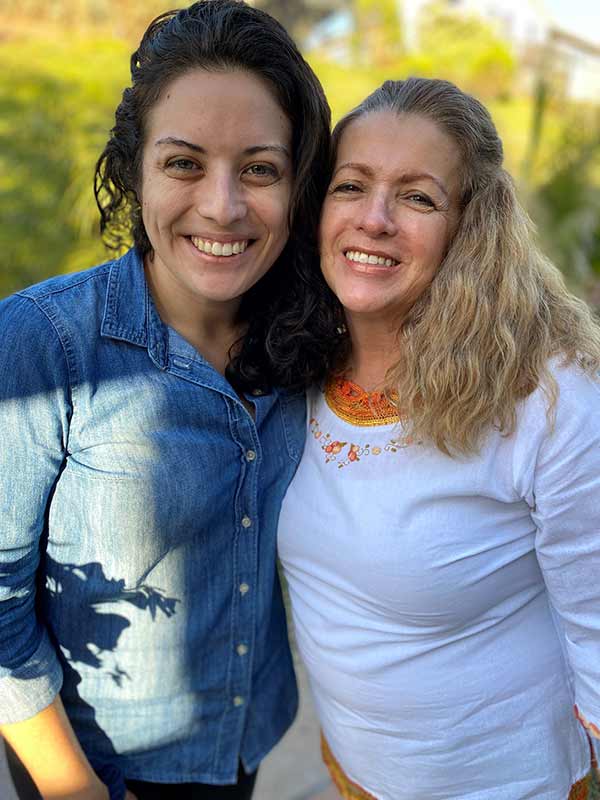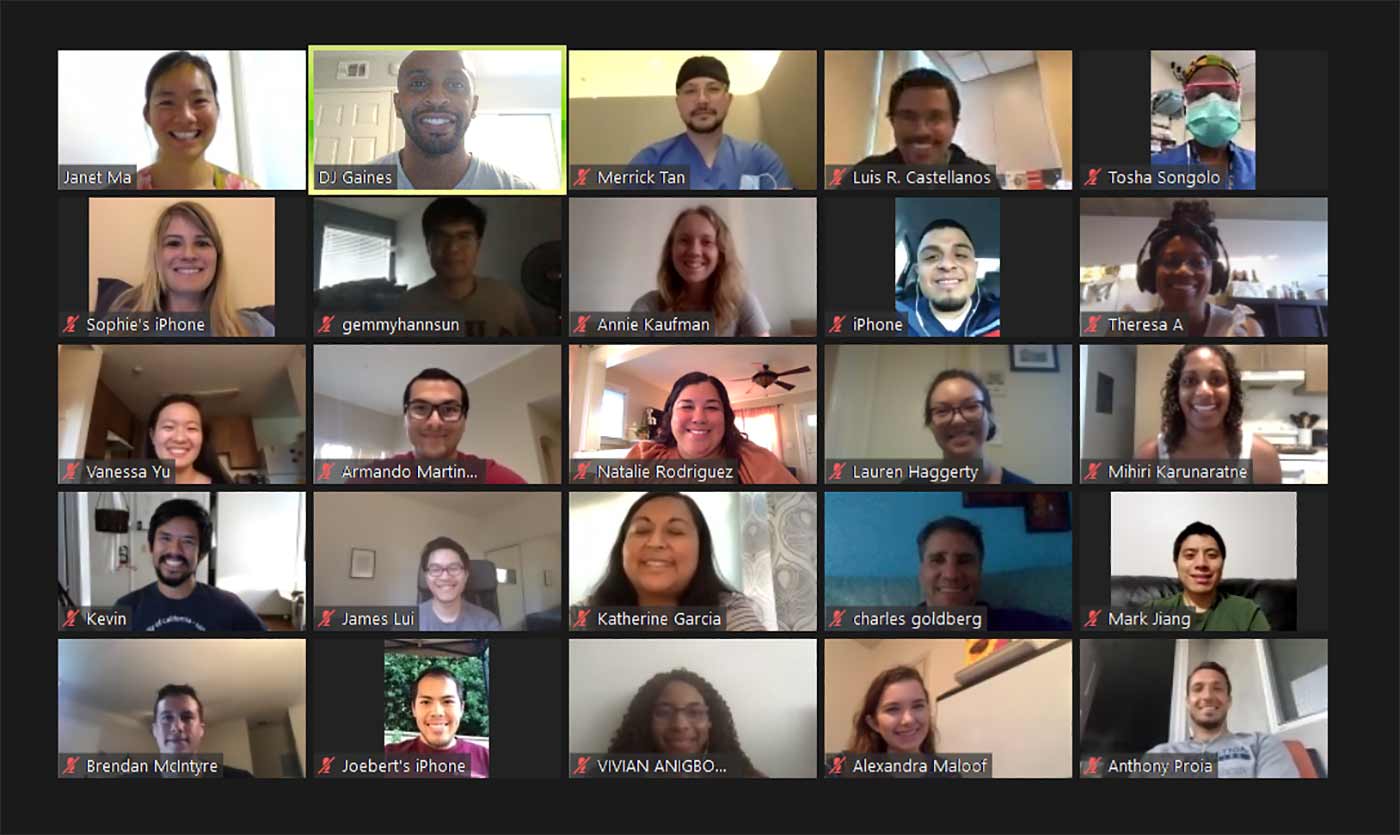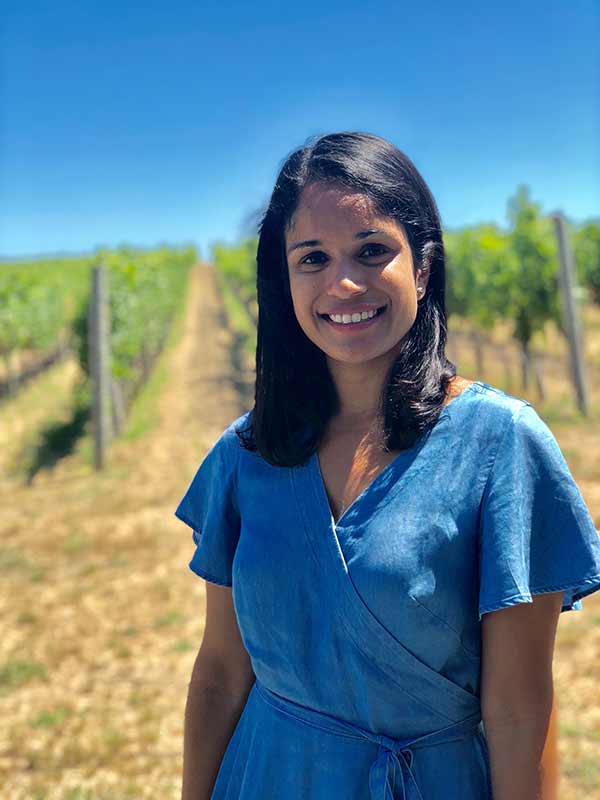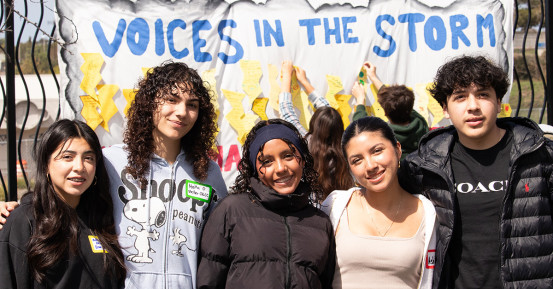By:
- Heather Buschman
Published Date
By:
- Heather Buschman
Share This:
Medical Students and Residents RISE
New “near-peer” mentoring program helps students who are underrepresented minorities in medicine navigate the final years of medical school
The transition from second to third year of medical school can be jarring for any student. The first two years are primarily classroom-based, while the last two years are dedicated to clinical rotations—rounding through hospital units, seeing patients and learning on the job from physicians.

Kim Parra-Guerrero (left), UC San Diego medical student, and her mother, who moved to the U.S. from Colombia
“Suddenly, you’re not sitting at your desk, studying for 12 hours a day, and that can be a rough transition for some people,” said Kim Parra-Guerrero, UC San Diego medical student.
As Parra-Guerrero prepares to start her own third year of medical school, she knows she’ll face the usual challenges—the long hours, the difficult cases, the need to think on your feet. But she’s also preparing for challenges that not all of her peers will experience: racial biases and racist experiences.
Parra-Guerrero’s parents emigrated from Colombia to the U.S. before she was born. She grew up in Chula Vista, Calif., where her parents were teachers. They taught her the value of education, but Parra-Guerrero wasn’t considering a career in medicine until a health crisis in the family. She appreciated how her family’s physician had what she now calls “cultural humility”. He took the time to connect with and understand them, even though they were from different backgrounds.
That’s the kind of physician Parra-Guerrero hopes to be, too. Yet throughout medical school, she has heard stories of racist incidents experienced by older students of color. A friend of hers, a fellow Latinx medical student, once had a patient mistake her for custodial staff as she walked in, saying “no, we don’t need the room cleaned right now.”
What do you do if that happens to you? It’s scenarios like that, on top of the typical struggles of a third-year medical student, which prompted Parra-Guerrero to do what she’s always done throughout her education: find a mentor who can help.
Parra-Guerrero is one of 16 third-year medical students to join a new 12-month program called RISE: Residents In Solidarity with Emerging Leaders.
RISE interested Parra-Guerrero in part because it’s different than many other mentorship programs in two main ways—your mentor is a resident only three to five years ahead of you in training, so their memories of medical school are fresher and more relevant, and you are paired with an underrepresented minority in medicine or ally.
“It’s motivating to see senior people in your field who look like you,” Parra-Guerrero said. “Plus, if your mentor is also an underrepresented minority or ally, they may know what it’s like to navigate microaggressions.”

RISE mentors and mentees meet for the first time via Zoom, led by Chief Medical Residents Janet Ma, MD, and Dirk Gaines, MD (top left)
RISE was created by Janet Ma, MD, outgoing chief medical resident in the Department of Medicine, and championed by Luis Castellanos, MD, director of Diversity in Medicine & Faculty Outreach for the Department of Medicine and director of the School of Medicine’s Program in Medical Education–Health Equity (PRIME-HEq), which trains physicians better able to meet the needs of the diverse Californian population who are traditionally underserved by the medical system. New Chief Resident Dirk Gaines, MD, will now lead RISE, with funding from the School of Medicine’s Hispanic Center of Excellence.
Ma says she and Castellanos have heard from medical students that they want more support for underrepresented minorities in medicine.
“And many residents say they wish they had something like this when they were in medical school, so we’re excited to give back,” Ma said.
Ma had faculty mentors throughout her education, but was inspired to create RISE by a similar “near-peer” mentoring program at Northwestern University.
RISE will hold mixers throughout the year for people to informally discuss issues of equity, diversity, inclusion and health disparities, as well as to establish natural connections within the group. Mentors and mentees will also touch base at end of each clinical rotation to discuss the medical student’s experiences in the clinics and any issues that arose, share resources and provide academic support. Most of the medical students participating are part of the PRIME-HEq program or the Latinx Medical Student Association.

Alisha Kabadi, MD, third-year resident in the UC San Diego School of Medicine Department of Internal Medicine and Parra-Guerrero’s RISE mentor
Shortly before the program’s kickoff in mid-June, Parra-Guerrero was matched with mentor Alisha Kabadi, MD, a third-year resident in the Department of Medicine.
“As physicians and physicians-in-training, we often see health disparities—patients who are poor and have poor access to health care, for example—and different people may be affected by that in different ways,” Kabadi said. “Medicine is a ‘go-go-go’ culture, but we can all really benefit by having someone to check in with not just academically, but also mentally and emotionally. And there’s something about talking with a peer, rather than your direct supervisor, that can be especially helpful in that way.”
Kabadi plans to start by meeting with Parra-Guerrero to discuss her career goals, concerns going into her third and fourth years in medical school and how to address the disparities she’ll see. She hopes Parra-Guerrero will be comfortable reaching out any time she has questions or is feeling unsettled about something.
“I like getting as many perspectives as I can—I think it’ll help me to be a better physician,” Parra-Guerrero said. “I know having an ally who went through this transition into the clinic recently will be a huge help in sharing tips to succeed.”
Share This:
You May Also Like
Stay in the Know
Keep up with all the latest from UC San Diego. Subscribe to the newsletter today.



